Virtual Reality in Education from the Perspective of Teachers
DOI :
https://doi.org/10.34069/AI/2020.26.02.33Mots-clés :
Virtual Reality, Education, Educational technology, Augmented RealityRésumé
Virtual reality is the system in which users feel that they are in a virtual world with various equipment and the users interact with this world. With this feature, virtual reality is very useful for many fields of activity, as well as education. Virtual reality applications in education enable students to gain experiences that are dangerous or impossible for them to acquire in real life and learn by doing and living. For this reason, virtual reality is an important innovation for future educational environments.
The population of this study is composed of teachers in private schools in Iraq in the 2017-2018 academic year. One hundred thirty teachers participated in the online questionnaire, 101 of which were considered valid. The sample consisted of 101 teachers who completed the questionnaire. Based on the findings, the results of the research were stated, and recommendations were developed.
As a result of the research, we realized that the vast majority of teachers think that virtual reality is interesting, encourages students to be active, is suitable for students with schematic and visual thinking style, provides students with a general idea about the subject, facilitates the implementation of information, makes it easier to learn, and it provides a quick review of the course they have studied. They also think it requires concentration.
Téléchargements
Références
Akkoyunlu, B. (1998), Bilgisayarlar?n Müfredat Programlar?ndaki Yeri ve Ö?retmenin Rolü, Hacettepe Üniversitesi, Ankara.
Akkoyunlu, B. and Kurbano?lu, S. (2003). Ö?retmen adaylar?n?n bilgi okuryazarl??? ve bilgisayar öz-yeterlik alg?lar? üzerine bir çal??ma. Hacettepe Üniversitesi E?itim Fakültesi Dergisi, 24(24), 1-10.
Andersen, P. (2007). What is Web 2.0?: ideas, technologies, and implications for education (Vol. 1): JISC Bristol.
Ar?c?, V. A. (2013). Fen e?itiminde sanal gerçeklik programlar? üzerine bir çal??ma:" Güne? sistemi ve ötesi: Uzay bilmecesi" ünitesi örne?i. Yay?mlanmam?? yüksek lisans tezi, Adnan Menderes Üniversitesi, Sosyal Bilimler Enstitüsü.
Ausburn, L. J., and Ausburn, F. B. (2004), “Desktop Virtual Reality: A Powerful New Technology for Teaching and Research in Industrial Teacher Education,” Journal of Industrial Teacher Education. Vol. 41, No. 4, s.1-16.
Azuma, R. (1999). The challenge of making augmented reality work outdoors. Mixed reality: Merging real and virtual worlds, 379-390.
Azuma, R., Baillot, Y., Behringer, R., Feiner, S., Julier, S., & MacIntyre, B. (2001). Recent advances in augmented reality. IEEE Computer Graphics and applications, 21(6), 34-47.
BayraktaR, E. and Kaleli, F. (2007), “Sanal Gerçeklik Ve Uygulama Alanlar?”, Akademik Bilisim 2007, Dumlup?nar Üniversitesi, Kütahya, 31 January -2 February 2007.
Bilgiç, H. G., Duman, D. and Sefero?lu, S. S. (2011). Dijital yerlilerin özellikleri ve çevrim içi ortamlar?n tasarlanmas?ndaki etkileri. Akademik Bili?im, 2(4), 1-7.
Billinghurst, M., and Duenser, A. (2012). Augmented reality in the classroom. Computer, 45(7), 56-63.
Bostan, B. (2007), Sanal Gerçeklikte Etkilesim, Yay?nlanmam?s Doktora Tezi, Marmara Üniversitesi, Sosyal Bilimler Enstitüsü.
Bujak, K. R., Radu, I., Catrambone, R., Macintyre, B., Zheng, R., and Golubski, G. (2013). A psychological perspective on augmented reality in the mathematics classroom. Computers & Education, 68, 536-544.
Burdea, G. and Coiffet, P. (2003), Virtual Reality Technology, John Wiley & Sons.
Carmigniani, J., Furht, B., Anisetti, M., Ceravolo, P., Damiani, E., and Ivkovic, M. (2011). Augmented reality technologies, systems, and applications. Multimedia Tools and Applications, 51(1), 341-377.
Çilenti, K. (1988), E?itim Teknolojisi ve Ö?retim, Kad?o?lu Matbaas?, Ankara.
Deryakulu, D. (1999), “Ça?das E?itimde Yeni Teknolojiler”, Anadolu Üniversitesi Aç?kö?retim Fakültesi Yay?nlar?, No. 1021.
Di Serio, Á., Ibáñez, M. B., & Kloos, C. D. (2013). Impact of an augmented reality system on students’ motivation for a visual art course. Computers & Education, 68, 586-596.
Erba?, Ç. and Demirer, V. (2015). Mobil art?r?lm?? gerçeklik uygulamalar?n?n incelenmesi ve e?itimsel aç?dan de?erlendirilmesi. Mersin Üniversitesi E?itim Fakültesi Dergisi, 11(3): 802-813.
Ersoy, H., Duman, E. and Öncü, S. (2016). Art?r?lm?? gerçeklik ile motivasyon ve ba?ar?: deneysel bir çal??ma. Journal of Instructional Technologies & Teacher Education, 5(1), 39-44.
Greenhow, C., Robelia, B., and Hughes, J. E. (2009). Learning, teaching, and scholarship in a digital age: Web 2.0 and classroom research: What path should we take now? Educational researcher, 38(4), 246-259.
Grubert, J., Langlotz, T., and Grasset, R. (2011). Augmented reality browser survey. Institute for computer graphics and vision, University of Technology Graz, technical report (1101).
Gün, E. (2014). Art?r?lm?? Gerçeklik Uygulamalar?n?n Ö?rencilerin Uzamsal Yeteneklerine Etkisi. In: Yay?mlanmam?? Yüksek Lisans Tezi. Ankara, Gazi Üniversitesi.
Gün, E. T., and Atasoy, B. (2017). The Effects of Augmented Reality on Elementary School Students’ Spatial Ability and Academic Achievement. E?itim ve Bilim, 42(191).
Günüç, S. (2017). E?itimde teknoloji entegrasyonunun kuramsal temelleri. Ankara, An? Yay?nc?l?k.
?bili, E. and ?ahin, S. (2013). Art?r?lm?? gerçeklik ile interaktif 3d geometri kitab? yaz?l?m?n tasar?m? ve geli?tirilmesi: ARGE3D. Afyon Kocatepe Üniversitesi Fen ve Mühendislik Bilimleri Dergisi, 13(1), 1-8.
?çten, T. and Bal, G. (2017). Art?r?lm?? gerçeklik üzerine son geli?melerin ve uygulamalar?n incelenmesi. Gazi Üniversitesi Fen Bilimleri Dergisi Part C: Tasar?m ve Teknoloji, 5(2), 111-136.
??man, A. (2005), Ö?retim Teknolojileri ve Materyal Gelistirme, Pegem A Yay?nc?l?k, Ankara.
Karasar, ?. (2004). E?itimde yeni ileti?im teknolojileri-internet ve sanal yüksek e?itim. The Turkish Online Journal of Educational Technology–TOJET, 3(4), 117-125.
Kayabasi, Y. (2005), “Sanal Gerçeklik Ve E?itim Amaçl? Kullan?lmas?”, The Turkish Online Journal of Educational Technology, Vol. 4, No. 3, s.151-158.
Küçük, S., Y?lmaz, R., and Gökta?, Y. (2014). ?ngilizce Ö?reniminde Art?r?lm?? Gerçeklik: Ö?rencilerin Ba?ar?, Tutum ve Bili?sel Yük Düzeyleri. E?itim ve Bilim, 39(176).
Le, H. Q., & Kim, J. I. (2016). An augmented reality application with hand gestures to support studying geometry. Korea Computer Graphics Society, 160-161.
Lee, K. (2012). Augmented reality in education and training. TechTrends, 56(2), 13-21.
Leighton, L. J., and Crompton, H. (2017). Augmented Reality in K-12 Education. In Mobile Technologies and Augmented Reality in Open Education (pp. 281-290): IGI Global.
Martín-Gutiérrez, J., Mora, C. E., Añorbe-Díaz, B., and González-Marrero, A. (2017). Virtual technologies trends in education. EURASIA Journal of Mathematics Science and Technology Education, 13(2), 469-486.
Rauschnabel, P. A., and Ro, Y. K. (2016). Augmented reality smart glasses: An investigation of technology acceptance drivers. International Journal of Technology Marketing, 11(2), 123-148.
Say?mer, ?., & Küçüksaraç, B. (2015). Yeni teknolojilerin üniversite e?itimine katk?s?: ?leti?im fakültesi ?rencilerinin art?r?lm?? gerçeklik uygulamalar?na ili?kin görü?leri. International Journal of Human Sciences, 12(2), 1536-1554.
Serin, H. (2015). The Role of technology in whole-class teaching. International Journal of Social Sciences & Educational Studies, 2(1), 25-27.
Serin, H., & Oz, Y. (2017a). Technology-integrated Mathematics Education at the Secondary School Level. International Journal of Social Sciences & Educational Studies, 3(4), 148-155.
Serin, H. (2017b). Augmented Technologies in the education: AR apps. Journal of Educational Sciences & Psychology, 7(2).
Serin, H. (2017c). The Effects of Interactive Whiteboard on Teaching Geometry. International Journal of Social Sciences & Educational Studies, 4(3), 216-219.
Stearns, L., DeSouza, V., Yin, J., Findlater, L., and Froehlich, J. E. (2017). Augmented Reality Magnification for Low Vision Users with the Microsoft Hololens and a Finger-Worn Camera.
Stone, R. (1995), “The Reality Of Virtual Reality,” Journal of World Class Design to Manufacture, Vol. 2, No. 4, s.11-17.
Telhan, O.(2002), Virtual Realities And Real Virtualities, Yay?nlanmam?s Doktora Tezi, Bilkent Üniversitesi, Güzel Sanatlar Enstitüsü.
Wagner, D., and Schmalstieg, D. (2003). First steps towards handheld augmented reality: IEEE.
Wojciechowski, R., & Cellary, W. (2013). Evaluation of learners’ attitudes toward learning in ARIES augmented reality environments. Computers & Education, 68, 570-585.
Y?lmaz, R. (2014). Art?r?lm?? gerçeklik teknolojisiyle 3 boyutlu hikaye canland?rman?n hikaye kurgulama becerisine ve yarat?c?l??a etkisi. Yay?mlanmam?? Doktora Tezi, Atatürk Üniversitesi E?itim Bilimleri Enstitüsü, Erzurum.
Y?lmaz, Z. A. and Batd?, V. (2016). Art?r?lm?? gerçeklik uygulamalar?n?n e?itimle bütünle?tirilmesinin meta-analitik ve tematik kar??la?t?rmal? analizi. E?itim ve Bilim, 41(188), 273-289.
Yuen, S., Yaoyuneyong, G., and Johnson, E. (2011). Augmented reality: An overview and five directions for AR in education. Journal of Educational Technology Development and Exchange, 4(1), 119-140.




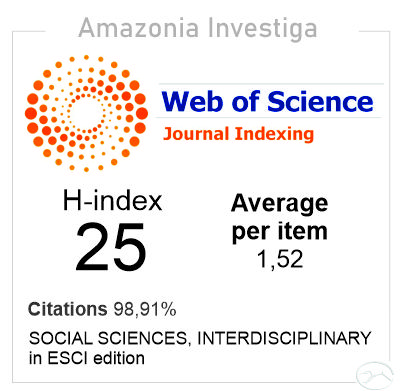
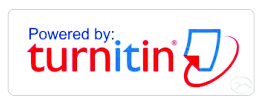



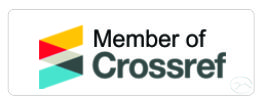











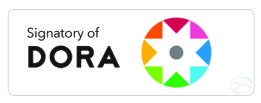

























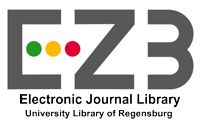





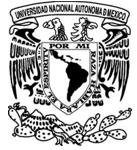











.gif)






